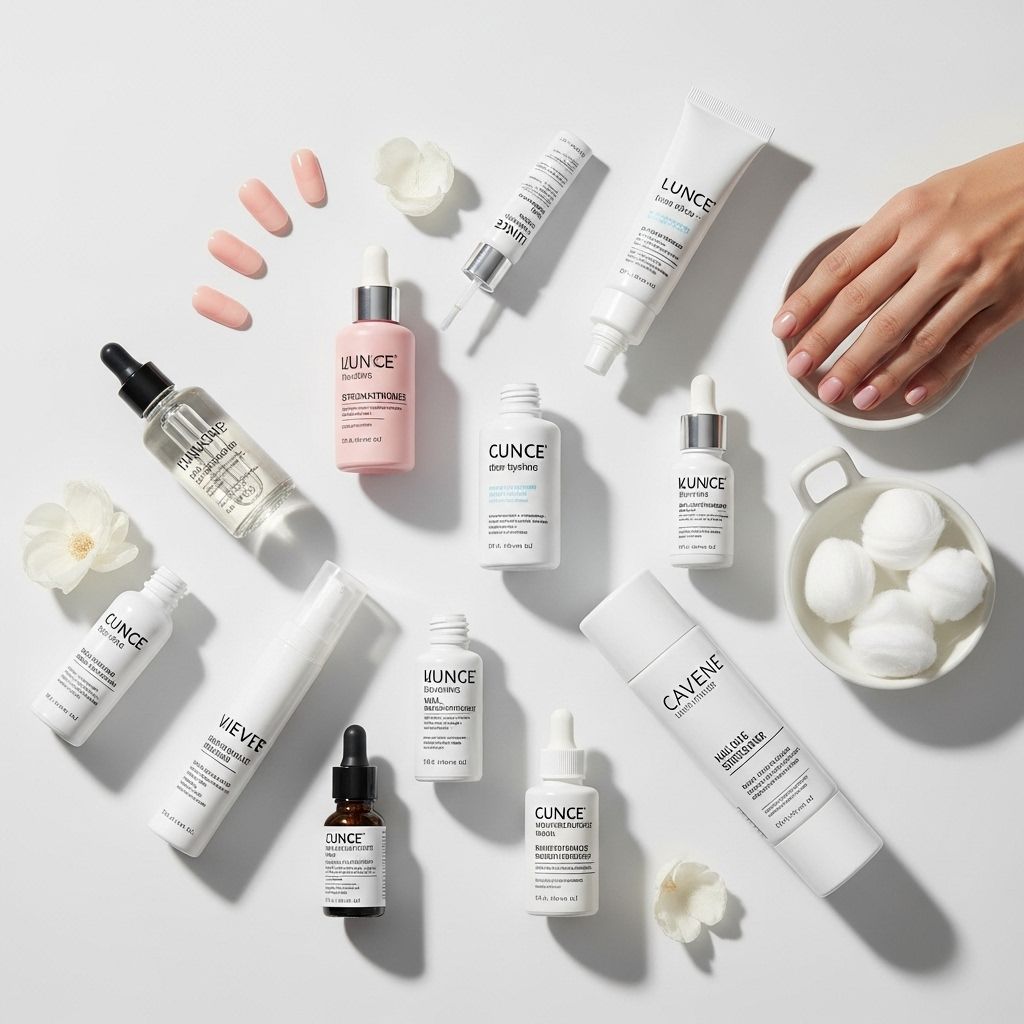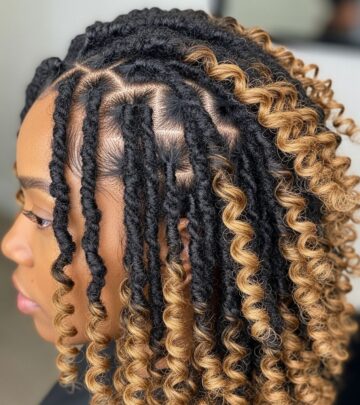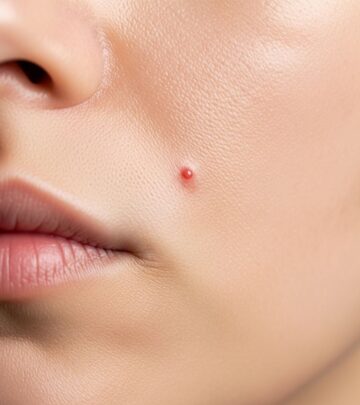Best Nail Strengtheners: Expert-Tested Products for 2025
Transform weak, brittle nails into strong, healthy ones with these dermatologist-approved nail strengthening treatments.

Weak, brittle nails can be frustrating to deal with, whether you’re struggling with naturally fragile nails or recovering from damage caused by frequent manicures. The good news is that nail strengtheners have evolved significantly, offering scientifically-backed solutions that target everything from peeling and breaking to rough textures and dullness. These specialized treatments work by either hydrating the nail plate to improve flexibility or creating a protective barrier that shields nails from environmental damage.
The modern nail care market offers an impressive array of strengthening products suitable for various nail concerns and lifestyles. Whether you’re dealing with post-gel-manicure damage, naturally weak nails, or simply want to maintain healthy nail growth, there’s a strengthening treatment designed specifically for your needs. Many of these products also double as base coats or top coats, making them convenient additions to your regular nail care routine while providing therapeutic benefits.
Understanding which nail strengthener is right for you depends on identifying your specific nail concerns and choosing products with ingredients proven to address those issues. Some strengtheners focus on hydration and repair, while others create a protective shield to prevent future damage. The best approach often involves consistent application over several weeks to see significant improvements in nail health, thickness, and resilience.
Understanding Nail Strengtheners and How They Work
Nail strengtheners are specialized formulations designed to improve the overall health, durability, and appearance of your nails. These products work through two primary mechanisms: hydration and protection. Hydrating strengtheners penetrate the nail plate to deliver moisture and nutrients that improve flexibility and prevent breakage from brittleness. These formulations typically contain humectants like hyaluronic acid, glycerin, or panthenol that bind water molecules to the nail structure.
Protective strengtheners create a hardened coating on the nail surface that acts as a shield against physical damage, chemicals, and environmental stressors. These products often contain proteins, calcium, or specialized polymers that form a tough barrier over the nail plate. Some advanced formulations combine both approaches, offering comprehensive care that addresses multiple nail concerns simultaneously.
The effectiveness of nail strengtheners largely depends on consistent application and choosing products with clinically-proven ingredients. Many dermatologists recommend looking for strengtheners containing biotin, keratin, peptides, or plant-derived oils that have demonstrated efficacy in clinical studies. Regular use over a period of weeks or months typically yields the best results, as nails grow slowly and require time to show visible improvement.
Top Scientifically-Proven Nail Strengthening Treatments
ISDIN SI-NAILS Nail Strengthener
This premium nail strengthener has earned recognition from board-certified dermatologists for its scientifically-validated formula. The treatment improves fingernail thickness, strength, and durability through a combination of hyaluronic acid and pistacia lentiscus oil, ingredients that have been clinically proven to significantly increase nail firmness when applied consistently over several weeks. The hyaluronic acid provides deep hydration to the nail matrix, while the botanical oil strengthens the nail structure from within.
Users report remarkable results after consistent use, with many noting that long-standing issues like nail splitting and ridging show dramatic improvement within a month. One satisfied customer shared that after years of struggling with ridged nails, this treatment finally delivered smooth, healthy-looking nails. The serum format makes application easy and precise, though the premium price point may be a consideration for budget-conscious shoppers. This product works best when applied daily as part of a comprehensive nail care routine.
Deborah Lippmann Hard Rock Strengthener
This versatile strengthener stands out for its ability to both hydrate and protect nails, making it ideal for those recovering from manicure-related damage. The formula combines panthenol, biotin, and hydrolyzed soy protein to create a comprehensive treatment that addresses multiple nail concerns. Panthenol acts as a humectant, attracting and retaining moisture in the nail plate, while biotin supports healthy nail growth and strength.
The hydrolyzed soy protein penetrates the nail structure to repair damage from within, making this treatment particularly effective for nails weakened by gel manicures, acrylics, or harsh removal processes. Users appreciate its dual functionality as both a base coat and top coat, with many reporting that their nail polish lasts twice as long when used under color. One long-time user with naturally soft, thin nails that tended to bend backward praised this product as the only treatment that prevented nail bending and subsequent peeling.
Orly Nail Defense Formula
This protein-enhanced strengthener focuses on repairing existing damage while building resistance to future nail problems. The formula features a powerhouse combination of vitamin E, calcium, and hydrolyzed wheat protein that work synergistically to fortify the nail structure. Calcium provides essential minerals that support nail hardness, while the hydrolyzed wheat protein fills in microscopic gaps in the nail plate to create a smoother, stronger surface.
The versatility of this product makes it suitable for various application methods—it can be worn alone on bare nails with fresh coats applied every other day, used as a base coat under polish, or layered over color as a protective top coat. Users who have struggled with severely damaged nails from years of artificial nail wear report significant improvements in nail strength and polish adhesion. The formula does have a noticeable odor that some users find strong, but the effectiveness of the treatment outweighs this minor drawback for most customers.
Key Ingredients to Look for in Nail Strengtheners
Understanding the science behind nail strengthening ingredients helps you make informed decisions when selecting products. Biotin, also known as vitamin B7, supports the production of keratin, the protein that forms the structural foundation of nails. Studies have shown that biotin supplementation can increase nail thickness and reduce brittleness when used consistently over several months.
Calcium provides essential minerals that contribute to nail hardness and structural integrity. While calcium is naturally present in nails, topical application can help reinforce the nail plate and prevent splitting. Keratin and hydrolyzed proteins work by filling in microscopic cracks and gaps in the nail surface, creating a smoother, more resilient nail structure.
Hyaluronic acid is a powerful humectant that can hold up to 1000 times its weight in water, making it exceptionally effective for nail hydration. This ingredient helps prevent brittleness caused by dehydration and improves nail flexibility. Panthenol (Pro-Vitamin B5) penetrates the nail plate to provide deep conditioning and moisture retention, while also supporting the health of the nail matrix where new nail cells are formed.
Plant oils such as pistacia lentiscus oil, argan oil, and jojoba oil provide nourishing fatty acids and antioxidants that support nail health. These botanical ingredients often have anti-inflammatory properties that can soothe irritated cuticles and nail beds while strengthening the nail structure.
Choosing Between Hydrating and Protective Formulas
Selecting the right type of nail strengthener depends on accurately identifying your specific nail concerns. Hydrating strengtheners are ideal if your nails are brittle, prone to snapping, or show signs of dehydration such as a dull appearance or visible peeling. These formulations work best for nails that have become damaged from frequent water exposure, harsh chemicals, or environmental factors that strip natural moisture.
If your nails are naturally soft and flexible but bend easily or tear, hydrating strengtheners that contain humectants and nourishing oils will provide the best results. These products improve nail flexibility and resilience, reducing the likelihood of breakage from everyday activities. They’re particularly beneficial during winter months when low humidity can exacerbate nail dryness.
Protective strengtheners are the better choice if your nails are constantly exposed to physical stress, impact, or harsh substances. These formulations create a hardened coating that shields the nail from damage and can significantly extend the life of your manicures. They work well for individuals who use their hands frequently in their work or hobbies, such as healthcare workers, cleaners, or those who type extensively.
Many advanced formulations now offer combination approaches that provide both hydration and protection. These versatile products are excellent for general nail maintenance or for those who aren’t sure which type of strengthener would work best for their needs. They offer comprehensive care that addresses multiple concerns simultaneously, making them a smart choice for most users.
Application Techniques for Maximum Effectiveness
Proper application technique significantly impacts the effectiveness of nail strengtheners. Begin by thoroughly cleaning your nails to remove any oils, residue, or old polish that could prevent product absorption. Use a gentle nail polish remover, preferably acetone-free, and wash your hands with soap and water. Ensure nails are completely dry before applying the strengthener.
When using a strengthener as a standalone treatment, apply thin, even coats to clean, bare nails, extending the product slightly under the free edge and over the cuticle area where it meets the nail. Reapplication frequency varies by product—some require daily application, while others recommend every other day. Always follow the manufacturer’s instructions for optimal results.
If using the strengthener as a base coat under polish, allow it to dry completely before applying color. This typically takes 2-3 minutes for most formulations. The strengthening base creates a smooth surface that helps polish adhere better and last longer. When using a strengthener as a top coat, apply it over completely dry nail polish, sealing the edges carefully to prevent chipping.
For intensive treatment, some products recommend applying the strengthener in layers over several days without removal, allowing the product to build up for enhanced protection. After 5-7 days, remove all layers with polish remover and start fresh. This method is particularly effective for severely damaged nails that need extra support.
Maintaining Results and Preventing Future Damage
Achieving strong, healthy nails requires ongoing maintenance beyond just using strengthening products. Gentle filing techniques are crucial—always file in one direction rather than using a back-and-forth sawing motion, which can cause microscopic tears in the nail structure. Use a fine-grit file and avoid filing too deeply into the sides of your nails, which can weaken them.
Protecting your nails from excessive water exposure helps maintain their strength. Wear gloves when doing dishes, cleaning, or any activity that involves prolonged water contact. While hydration is important for nail health, excessive water exposure can actually weaken nails by causing them to expand and contract repeatedly, leading to structural damage.
Regular cuticle care supports overall nail health since the cuticle protects the nail matrix where new nail cells form. Apply cuticle oil daily to keep this area moisturized and flexible. Avoid cutting cuticles, as this can lead to infections and damage the nail matrix. Instead, gently push them back after showering when they’re soft.
If you regularly get gel manicures or use artificial nails, give your natural nails periodic breaks to recover. During these rest periods, focus intensively on strengthening treatments and deep hydration. When removing gel polish, avoid peeling it off, as this removes layers of the nail plate. Instead, use proper removal techniques with acetone wraps or visit a professional.
Understanding Your Nail Type and Specific Needs
Nails can be classified into several types, each requiring different care approaches. Naturally soft and thin nails are typically flexible and prone to bending or tearing rather than breaking cleanly. These nails benefit most from protein-rich strengtheners that build up the nail plate and protective formulas that add a hardened coating.
Brittle and rigid nails tend to snap or break rather than bend, often showing signs of dehydration such as peeling or a rough texture. These nails require hydrating strengtheners with ingredients like hyaluronic acid, panthenol, and nourishing oils that restore moisture and improve flexibility. Avoiding harsh chemicals and frequent water exposure is particularly important for this nail type.
Damaged or recovering nails from gel manicures, acrylics, or nail treatments need comprehensive repair formulas that combine hydration with structural support. Look for strengtheners containing biotin, keratin, and vitamins that support healthy nail regeneration. These nails often show thinning, ridging, or uneven texture and require several weeks of consistent treatment to fully recover.
Aging nails naturally become more brittle and grow more slowly due to decreased circulation and changes in nail composition. Strengtheners for mature nails should focus on deep hydration and ingredients that support cellular renewal, such as peptides and alpha hydroxy acids. Regular massage of the nail area can also improve circulation and support healthier nail growth.
Common Mistakes to Avoid with Nail Strengtheners
One of the most common mistakes is expecting immediate results from nail strengtheners. Nails grow slowly, typically only 2-3 millimeters per month, which means you won’t see the full benefits of treatment until the damaged portion has completely grown out. This process usually takes 3-6 months for fingernails. Consistency is key—sporadic application won’t deliver the same results as regular use.
Another frequent error is using too much product or applying layers that are too thick. This can actually weaken nails as the heavy coating becomes brittle and cracks, taking layers of the natural nail with it when it chips off. Always apply thin, even coats and allow proper drying time between layers. More product doesn’t mean better results.
Some people make the mistake of using strengtheners exclusively without addressing other aspects of nail care. Nail health is holistic—it requires proper nutrition, hydration, protection from damage, and gentle handling. Strengtheners work best as part of a comprehensive nail care routine that includes cuticle care, protection from harsh chemicals, and maintaining overall health through proper diet and hydration.
Continuing to use damaging nail treatments while trying to strengthen nails is counterproductive. If you’re using a strengthening treatment, avoid harsh nail polish removers, excessive filing, gel manicures, or artificial nails during the treatment period. Give your nails the best chance to recover by minimizing additional stress and damage.
Budget-Friendly Alternatives and DIY Options
While premium nail strengtheners offer scientifically-validated formulas, there are effective budget-friendly options available. Many drugstore brands offer strengthening treatments containing beneficial ingredients like biotin, calcium, and proteins at a fraction of the cost of luxury products. Reading ingredient lists carefully helps identify products with proven strengthening components regardless of price point.
Natural oils can provide excellent nail nourishment at minimal cost. Vitamin E oil, jojoba oil, and sweet almond oil are particularly beneficial for nail health and can be applied directly to nails and cuticles daily. While they won’t provide the same protective coating as commercial strengtheners, they offer deep hydration and support healthy nail growth when used consistently.
Creating a simple DIY nail strengthening treatment at home is possible using ingredients like olive oil, lemon juice, and sea salt. A weekly soak combining these ingredients can help improve nail strength and appearance. However, it’s important to note that DIY treatments typically lack the advanced formulations and clinically-proven ingredients found in commercial products.
Another budget-conscious approach is using a basic clear nail polish as a protective coating while supplementing with nail-nourishing oils and proper care techniques. While this won’t provide targeted strengthening benefits, it does offer some protection from physical damage and can help maintain nail health when combined with good nail care practices.
When to See a Professional
While nail strengtheners can address many common nail concerns, certain conditions require professional evaluation. If your nails show sudden changes in color, texture, or growth patterns, consult a dermatologist or healthcare provider. These changes can sometimes indicate underlying health issues, nutritional deficiencies, or fungal infections that won’t respond to topical treatments alone.
Persistent nail problems that don’t improve after 2-3 months of consistent strengthener use may require medical attention. A dermatologist can assess whether there are underlying causes such as psoriasis, eczema, or thyroid issues affecting nail health. They can also provide prescription treatments or professional recommendations tailored to your specific situation.
If you experience pain, swelling, or signs of infection around your nails, seek professional care immediately. These symptoms indicate conditions that require medical treatment rather than cosmetic solutions. Similarly, if you notice separation of the nail from the nail bed, excessive thickening, or unusual growths, professional evaluation is essential.
Frequently Asked Questions About Nail Strengtheners
Q: How long does it take to see results from nail strengtheners?
A: Most users begin noticing improvements in nail strength and appearance within 2-4 weeks of consistent use. However, because nails grow slowly, seeing complete transformation of damaged nails typically requires 3-6 months of regular application as the damaged portion grows out and is replaced by healthier nail tissue.
Q: Can I use nail strengthener with regular nail polish?
A: Yes, many nail strengtheners are designed to work as base coats under regular polish or can be applied as standalone treatments. Some can also be used as top coats. Check the product instructions for specific application recommendations to maximize both strengthening benefits and polish longevity.
Q: Are nail strengtheners safe for pregnant women?
A: Most nail strengtheners are safe during pregnancy, but it’s always best to consult your healthcare provider before starting any new beauty treatments. Look for products free from harsh chemicals like formaldehyde, toluene, and dibutyl phthalate, which are best avoided during pregnancy.
Q: Can nail strengtheners make my nails too hard?
A: When used as directed, quality nail strengtheners should improve nail strength without making them overly rigid. However, overuse of hardening formulas can potentially make nails too inflexible, leading to breakage. Follow product instructions carefully and consider alternating between strengthening and hydrating treatments.
Q: Do I need to remove nail strengthener before reapplying?
A: This depends on the product type. Some strengtheners are designed for layering over several days, while others should be removed and reapplied regularly. Check the manufacturer’s instructions for optimal application frequency and whether removal is necessary between applications.
Q: Will nail strengtheners help with nail ridges?
A: Many nail strengtheners can help reduce the appearance of ridges by smoothing the nail surface and filling in minor irregularities. Products containing alpha hydroxy acids or those that promote cell renewal are particularly effective for addressing ridging. Consistent use over several weeks typically yields the best results.
Q: Can I use cuticle oil with nail strengthener?
A: Yes, cuticle oil is an excellent complement to nail strengtheners. Apply the strengthener to the nail plate first and allow it to dry completely, then apply cuticle oil to the surrounding skin and cuticle area. This combination provides comprehensive nail care addressing both the nail itself and the surrounding tissue.
References
Read full bio of medha deb












